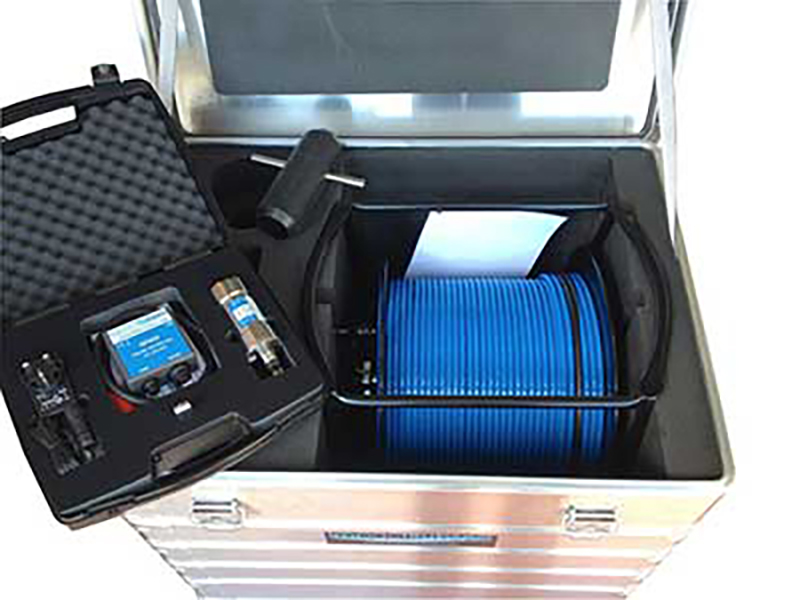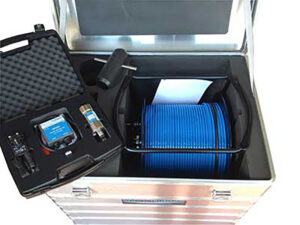Suppliers
Add your company
Innovative, High-Performance Underwater Sensing Technologies for the Marine Industry
If you design, build or supply Flooded Member Detection, create a profile to showcase your capabilities on this page
Products
Flooded Member Detection Systems
Flooded member detection is a non-invasive inspection technique to determine whether water has entered structural members of offshore and subsea platforms. These members, often tubular, are expected to remain dry internally as part of their load-bearing design. Ingress of water compromises structural integrity, making FMD essential for ensuring operational safety and compliance with international standards.
FMD is especially important in aging offshore infrastructure, where corrosion, welding defects, or accidental impacts may lead to breaches. Routine detection forms part of comprehensive asset integrity management strategies for subsea oil and gas facilities, wind farms, and naval installations.
Applications of Flooded Member Detection Systems
Flooded member detection is essential across a range of maritime and offshore industries:
- Oil and gas platforms: FMD is used during routine inspections of jackets, risers, and braces to identify water ingress that may compromise structural support.
- Offshore wind farms: Foundations and transition pieces in harsh environments are prone to fatigue and damage. FMD ensures early fault detection and maintenance planning.
- Subsea pipelines and connectors: Regular FMD ensures the reliability of pipelines and structural connectors in dynamic subsea environments.
- Naval and defense infrastructure: Underwater piers, mooring systems, and other naval assets benefit from periodic flooded member inspection for long-term durability.
- Underwater civil engineering: Bridges, submerged tunnels, and piers are also inspected using FMD systems to ensure safety and compliance.
FMD System Integration and Connectivity
Modern flooded member detection systems are often integrated with subsea ROVs (remotely operated vehicles) or diver-held tools. These systems support data logging and real-time analysis, often using RS232 or RS485 communication protocols for robust and low-latency signal transmission. Composite transducers and digital ultrasonic probes enhance detection accuracy, even in deep or murky waters.
Common Methods of Flooded Member Detection
Several established technologies are used for flooded member inspection, each with specific strengths and limitations depending on the structural configuration, water depth, and inspection requirements.
Ultrasonic testing (UT)
Ultrasonic testing is the most widely used method for flooded member detection. It involves transmitting high-frequency sound waves into the structure using an ultrasonic probe or composite transducer. If the member is dry, the signal reflects off the inner wall; if flooded, it passes into the water-filled cavity, resulting in a distinct signal loss or change in echo pattern.
Benefits:
- High accuracy and repeatability
- Cost-effective and relatively simple to deploy
- Well-supported by existing inspection systems and software
Drawbacks:
- Requires direct contact or close proximity
- Surface condition and marine growth can affect signal quality
Gamma-ray detection
Gamma-ray flooded member detection utilizes radioactive sources to measure density changes in the structure. This method distinguishes between air-filled and water-filled cavities based on gamma ray attenuation.
Benefits:
- Effective through coatings and marine growth
- Non-contact and suitable for complex geometries
Drawbacks:
- Requires radiation safety protocols
- More expensive and time-consuming than UT
Wideband acoustic technology
This emerging technique involves emitting acoustic frequencies and analyzing the response signature. It can detect fluid presence without physical contact and works even in conditions with thick coatings or significant marine growth.
Benefits:
- Non-contact and fast scanning capability
- Effective in challenging subsea environments
Drawbacks:
- May require calibration for each structure
- Less established in terms of long-term field validation
Choosing the Correct FMD Method
The appropriate FMD method depends on inspection goals, environmental conditions, and asset configuration. Ultrasonic flooded member detection remains the most cost-effective and accurate for most applications. However, gamma ray systems are invaluable when working around complex coatings or in access-limited environments. Wideband acoustic technologies continue to gain traction due to their speed and versatility, especially in deep subsea settings.
Flooded member detection remains an indispensable tool in ensuring the safety and functionality of critical offshore and marine infrastructure. With various detection methods, from ultrasonic testing to gamma ray and acoustic systems, operators can select the most effective approach based on structural, environmental, and operational criteria. Advances in sensor technology, connectivity, and data processing are further enhancing the capability and reliability of FMD systems in demanding subsea environments.









